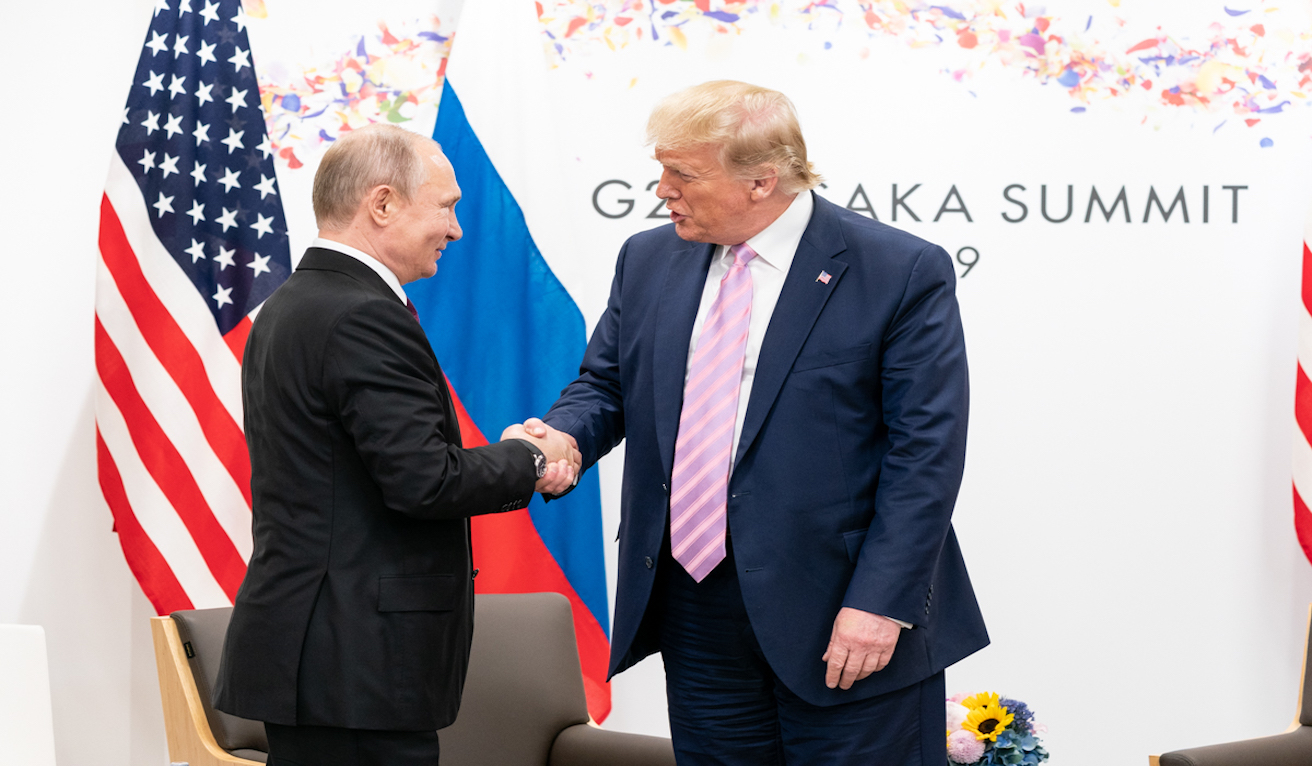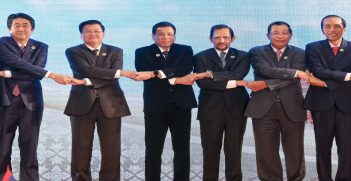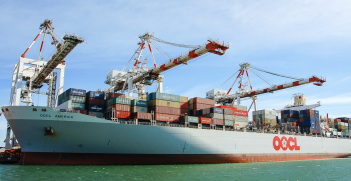Implications of the US Exit From the INF Treaty

The Trump administration’s withdrawal of the US from the Intermediate-range Nuclear Forces Treaty earlier this month is the culmination of an extended period of shadow boxing between Moscow and Washington. What will the withdrawal mean for Asia and Australia?
For many Australian observers, recent comments by US Defence Secretary Mark Esper leading up to the annual Australia-United States Ministerial Consultation AUSMIN meeting that he would like the US to deploy land-based intermediate range missiles in Asia “sooner rather than later” appeared to come out of nowhere.
The Morrison government quickly backtracked on remarks by Foreign Minister Marise Payne that Australia might be open to hosting such a deployment, by emphasising there was no confirmation that Washington was preparing to make a formal request. The Australian government seems to have been strangely unprepared in its response to Esper’s comments, given that Canberra had been aware for some time that the Trump administration’s withdrawal from the Intermediate-Range Nuclear Forces (INF) treaty would be accompanied by US suggestions of stationing new classes of missiles on the territory of Asian allies.
Negotiated in 1987 during the late Cold War, the INF Treaty imposed a ban on US and Russian nuclear and conventional ground-launched ballistic and cruise missiles with ranges of 500 to 5,500 kilometres. By banning an entire class of weapons system, the treaty was more disarmament than arms control, and it closely articulated with the Reagan-Gorbachev grand vision of deep cuts in nuclear weapons. Despite some misgivings amongst some European allies about the loss of what they considered important NATO nuclear capabilities, the treaty drew a politically popular close to NATO’s contentious deployment of new nuclear missiles, which it had decided on in the 1979 “double-track” decision to restore a regional balance of forces in Europe.
The Trump administration’s withdrawal of the US from the INF Treaty earlier this month is the culmination of an extended period of shadow boxing between Moscow and Washington. The US announced in February that it was suspending its obligations under the Treaty, which came four years after the US State Department, during the Obama Presidency, first accused Moscow of repeatedly breaching INF limits by testing ground-launched cruise missiles. NATO members now estimate that Russia has fielded up to 4 battalions of missiles banned under the treaty, which meant that Washington’s pull-out was met with disappointment and resignation, rather than the opposition that had met the Bush administration’s withdrawal from the landmark Anti-Ballistic Missile treaty in 2002: NATO Secretary-General Jens Stoltenberg noted that Russia was “fully responsible” for breaching the treaty, and defended the Trump administration’s action as “a response to the significant risks to Euro-Atlantic security.”
The INF Treaty was certainly a watershed for global arms control, but what does its demise mean for nuclear deterrence? Answering this question is not as straightforward as protagonists on both sides of the debate would have us believe. Opponents and proponents of the US withdrawal assert that the death of INF will trigger development and deployment of new INF-range missiles in regional theatres that are already grappling with rising great power tensions. But whereas opponents see dangers of new arms races and instability, proponents argue that it was US compliance with the INF that was creating both, given Russia’s significant violation of an agreement that didn’t cover China to begin with: Most of the substantial ballistic and cruise missile forces that Beijing has arrayed against Taiwan, Japan and Guam fall into the INF-treaty range.
Russia’s aggressive strategic posture against the North Atlantic Treaty Organisation (NATO) member states has increased since its intervention in Crimea and Ukraine in 2014, which has been reflected in direct nuclear threats and growing evidence that Moscow envisions nuclear weapons playing a significant coercive role in even limited conflict with the West. While NATO’s members have, for the moment, decided against the deployment of new land-based missiles of their own, they have agreed to “work on issues such as exercises, intelligence, surveillance and reconnaissance, air and missile defences, and conventional capabilities, while also ensuring that NATO’s nuclear deterrent remains safe, secure and effective.” Defending European NATO members against Russia’s new missiles will require significant new allied investment in ballistic missile and cruise missile defences. Prospects for improved relations between Russia and the West thus seem to recede even further, as Europe’s politicians (and taxpayers) are left to ask themselves just why Russia might find it necessary to field new missiles for nuclear strikes on Paris, London or Berlin.
In Asia, the picture is different because the threat from Chinese missiles has already been growing for years, as has the prominence of missile defence capabilities in US alliances with Japan and South Korea. Here, there is a much stronger case for the deployment of new US land-based ballistic and cruise missiles that might enhance deterrence against China, as land-based missiles (even on relatively small islands) are far more survivable than surface ships and aircraft, and geography means that missile range is at a much greater premium than in Europe. While Chinese nuclear doctrine is less aggressive than Russia’s, Beijing has worked hard to acquire a range of conventional options that would complicate US military intervention in the event of a Taiwan contingency or a conflict in the South or East China Sea. By deploying land-based ballistic missiles in a variety of basing modes, including distributed mobile systems, the US would diversity its options to respond against difficult to access targets in China, such as air bases, missile operating sites, and command posts, thereby reducing the likelihood that China might convince itself that it could gain a significant advantage from a first strike against US and allied forces in the Western Pacific.
Yet, if the Trump administration determines it is serious about pressing ahead with deploying new ballistic and cruise missiles to Asia (or Europe), it confronts a major challenge: the need for allied consent. Beyond the US territory of Guam and the Northern Mariana Islands, whose small territories would raise challenges when relying on mobility alone for survival of the missiles, the US would need to station missiles on the territory of US allies. At the moment, it is very hard to think of a single US ally in Asia that would be willing to do so. South Korea, Japan and Australia are all baulking at the prospect of domestic opposition, and potentially savage economic retaliation from Beijing, which as already warned that “everything will be on the table” if such deployments go ahead. On the other hand, it will be at least 18 months before the US could deploy a land-based version of the venerable Tomahawk cruise missile, and several years longer for new ballistic missiles or more exotic hypersonic vehicles—if the Democratic majority in the US House of Representatives agrees to fund these programs.
Ultimately, the INF treaty came to an end because it had outlived its military and political utility for too many of the relevant powers. Russia had decided to violate it with new missiles already. For NATO Europe, the end of the treaty is part of its coming to terms with the strategic consequences of Russia’s open hostility, whereas in Asia the treaty’s effect has always been one-sided. In its day, the on-site inspection provisions of the INF agreement were a huge step forward for confidence-building, but they have long lapsed and the verification provisions of the “New START” treaty are far more important. Even if new INF-range US missiles will have conventional warheads, those that see nuclear (and conventional) disarmament as an end in its own right will see the end of the treaty a major step backwards. But the original purpose of arms control was to make deterrence more robust and reliable by reducing the incentives for first strikes. In that, the treaty had long failed. If its end now spurs the United States and its allies to have serious discussions about what it will take to maintain strategic stability in the competition between great powers in Europe and Asia as it exists in 2019, rather than 1987, it may well have served a last, useful purpose.
Stephan Frühling is Associate Professor in the Strategic and Defence Studies Centre at the ANU and Andrew O’Neil is Professor in the School of Government and International Relations at Griffith University
This article is published under a Creative Commons Licence and may be republished with attribution.





